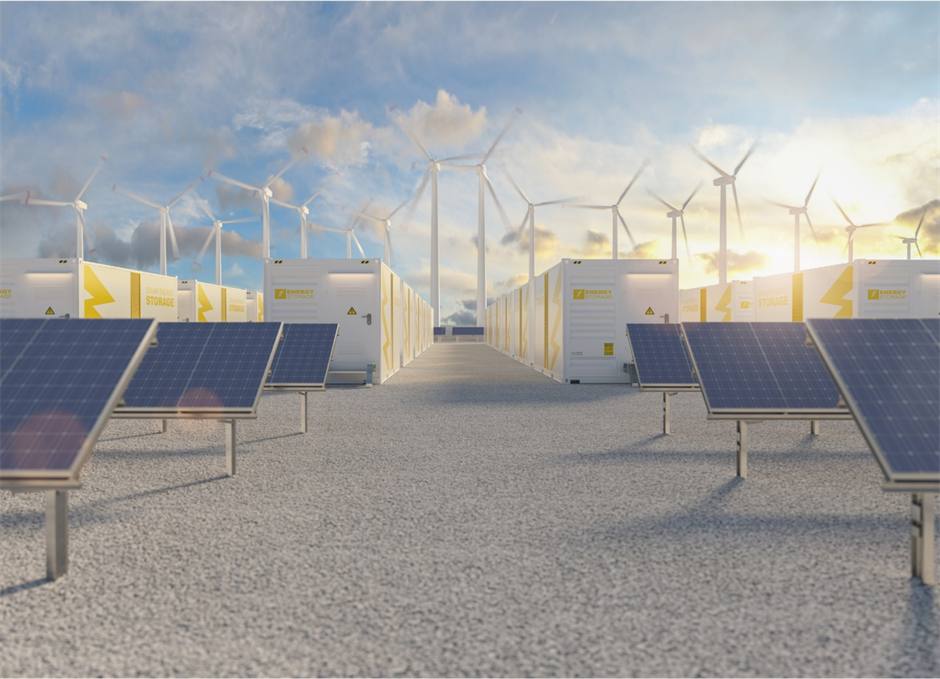Overcoming Energy Storage Supply Chain Deployment Constraints
- 23/10/27
- Energy Storage
According to a report by Benchmark Source, the supply chain intelligence analysts, Almost $300 billion of investment in new lithium ion battery gigafactories has been announced in the last 4 years, with nearly half of that ($130 Bn) announced in the last year alone. Investments in battery capacity are robust, and the S&P Global Commodity Insights report calculated manufacturing capacity will reach 6.5 TWh in 2030, led by China, which is projected to have over half the market share, alongside North America and Europe, each boasting over 1 TWh of lithium-ion battery capacity.
This growth trajectory isn't without supply chain challenges that can be difficult to overcome if they aren't integrated and managed by experienced operators in the industry. Long term product viability is especially important for Battery Energy Storage Systems, both with their hardware and software capabilities, and here at Trina Storage we are pioneering in both spaces as investment in innovation technologies – like the Elementa BESS & E2MS Energy Management System – continues.
Energy Storage News commented on our unique service proposition by saying: “[Trina Storage] is highly vertically integrated in its solar PV module manufacturing business to capture the full economic value of everything from raw materials to finished products.”
Here's how we're solving the supply chain challenges.
Energy storage project complexity
As cited in our previous article, energy storage projects are inherently more complex than more commonly 'self-integrated' renewable energy projects, like solar farms for example, due to the fusion of chemical and electromechanical systems at play and the number of third-party components required to integrate with. This complexity is intensified by the need to continuously manage and communicate battery cells' state of health to other controllers throughout the system leveraging BMS technology.
This then favors the vertically integrated approach, which refers to the operating strategy that a single company like Trina Storage deploys, in order to control key stages of the BESS project lifecycle from design and engineering to procurement, installation, commissioning, monitoring and maintenance.
This approach allows the company to manage and control aspects of the project that would otherwise add an unnecessary risk by using third-party suppliers, including the manufacturing and integration of components like batteries, power conversion systems, and energy management systems.

Centralized approach to supply chain management
Supply chain models like this can offer a streamlined approach to manage project complexity and allow for global capacity with local expertise. Here are the main benefits of such a model applied to battery energy storage:
Cost optimization
Centralizing procurement processes allows companies like Trina to buy materials and components in bulk, leveraging economies of scale. This reduces the per-unit cost of each component, leading to overall cost savings.
This can also eliminate repetitive processes and tasks that might exist across multiple decentralized units too, giving a lean approach that minimizes wastage of resources and time, translating to reduced operational costs.
Managing inventory from a central location can lead to better forecasting and reduced carrying costs. Overstocking and stock-outs can be minimized as the inventory levels can be more accurately predicted and controlled.
Quality control and assurances
Operations ensure that the same standards and processes are adhered to consistently. This uniformity means each BESS unit produced will adhere to the same high standards, reducing variations in product quality.
Well-equipped central facilities can oversee the testing of all products too, ensuring rigorous quality checks and allowing for the swift implementation of improvements discovered during the R&D phase.
This also means quicker communication between different stages of production. If a quality issue arises at one stage, it can be swiftly communicated to all relevant departments, ensuring rapid resolutions.

Shorter delivery times
Centralizing the production process can lead to a smoother flow of materials and components from source. This streamlined flow ensures that there are minimal delays allowing for quicker production cycles.
Logistics are optimized to ensure that materials come in and finished products go out in the most efficient manner possible. This can reduce the time taken for products to reach the market.
Effective central resource management means that they can be allocated more efficiently based on demand. If one product line requires more resources for a sudden surge in demand, those resources can be swiftly redirected, ensuring timely delivery.
Conclusion
Ultimately, overcoming supply chain deployment challenges comes down to experience and trust. With a PV manufacturing heritage that spans a quarter of a century, and many successful utility-scale projects delivered globally, Trina is a company that exudes these.
With specialized supply chain and procurement divisions, Trina Storage empowers our clients to hone in on system-level cost optimization and mitigate supply risks. This is augmented by leveraging Trina's expansive group purchasing capabilities. Adhering to their commitment to excellence, we incorporate only tier-one components, ensuring peak quality, performance and safety in our solutions.
Elementa, powered by E2MS, is positioned to bolster utility-scale grid resilience with storage solutions that mitigate the risk of intermittent renewable energy supplies. This directly feeds into increasing the global sustainable energy mandates, aligning with the ambitious goal of reaching net zero emissions by 2050.
Relevant Topics
Smart Energy Solutions
delivered straight to your inbox

